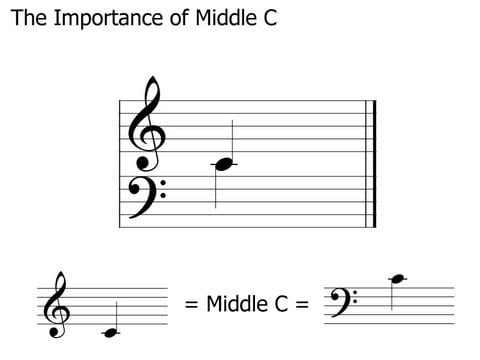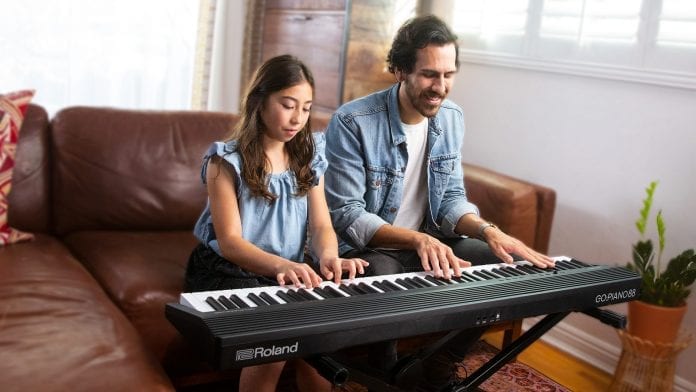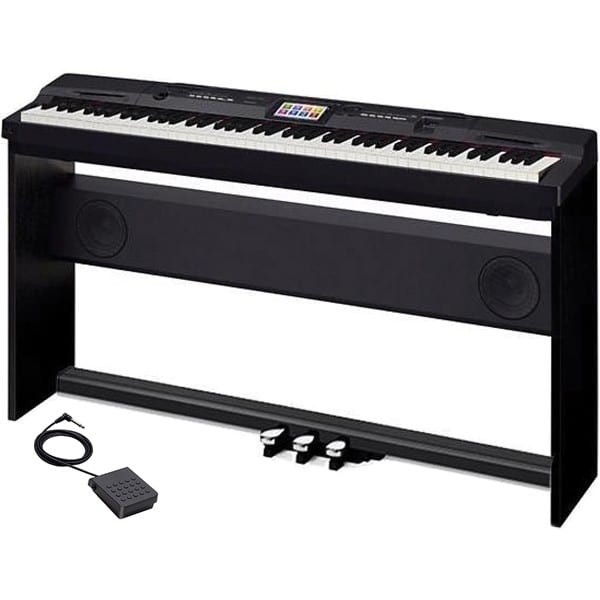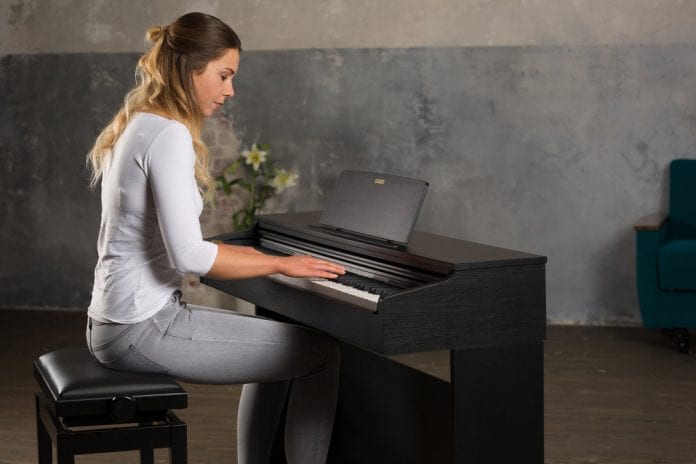Just like learning the first steps to anything, beginning to play a digital piano starts with the easy things first. After getting acquainted with how the keyboard feels it is time to get the ball rolling!
The first thing to do while learning to play a digital piano is to find middle C. The trick to finding middle C is to look near the middle of the piano and choose the key just to the left of the two paired black keys. Finding middle C is the lesson upon which all other lessons will unfold.

A normal piano that is not digital has 88 keys. Many digital pianos have less than that, around 54 to 73 keys – and you can look for further info and find the best digital pianos on this website. The amount of keys your piano has is not a problem. Middle C is always the same tone on all pianos, so simply call a friend or family member to let you hear their piano’s middle C and you will be set.
After successfully locating middle C it is time to count fingers. On your right hand, the thumb is finger number one. The index finger is number two, and so on. It is the same for the left hand.
Believe it or not, it is already time to play your first chord. Place finger number one of your right hand on middle C, your third finger two white keys to the right and the fifth finger five white keys to the right. If you press down on these three keys at once you will have made your first C chord. Congratulations!

The satisfaction of seeing some progress should give you more motivation. If you are a person who can hear tones and play a keyboard by ear, so much the better. If not, there are systems put in place to help you play beautifully.
The keys on a keyboard are represented on sheet music as well. If you can imagine looking at a few bars and notes that guide your fingers to play music, this is where it starts. Sheet music is printed with two bars of five lines.
Did your digital piano come with pedals? If so, they should act just like normal piano pedals. These are three foot-operated levers that produce different sound effects.
The pedal farthest to the right is the sustain pedal. Like the word, when pressed, this pedal will continue allowing the sound of the piano to be heard. This is true even if keys are no longer being pressed on the piano keyboard.

The middle pedal is the sostenuto lever. This allows some keys to hold their sound while others do not. For example, hitting a bass note while pressing the sostenuto pedal will sustain the bass note, while the succeeding keys will not be sustained. This is useful for playing staccato notes with a bass background.
The last pedal is farthest to the left. It is the Una Corda. It is sometimes called the soft pedal. As the name implies, when used, it will soften the sound of pressed keys. This is useful to control volume while your hands are busy playing.
The next step is to buy sheet music. You should buy a simple song, perhaps one that is no more than just a few notes on the sheet. The treble clef is the top five lines and the bass clef is the bottom five lines. Middle C is on an imaginary line just below the treble clef.
A pointer to remember is to listen carefully to how notes sound. Learning the difference between major and minor chords is an important step to learn. A major and a minor chord have different sonics to them. That is, they produce a different feel. Minors are more melancholy and majors have a brighter feel to them.
At this point, a piano teacher would be a great asset to be able to learn faster. But if you are a person who wants to learn on your own, you are now off to a great start. Expanding your ability to reproduce what is on sheet music should become your first priority.

Learn the spaces and lines and where they correspond to your keyboard. The treble clef, which is the top five lines in your sheet music, also has spaces. Did you know that the spaces spell a word? Going from the bottom space to the top space on the treble clef corresponds to the keys, F, A, C and E. That is right, those spaces spell out the word “face”.
Once you have learned the basic tips for reading sheet music you will be playing at a higher level of expertise in a short time. The last thing to learn is to become a polished player. This means practicing, but it also means you are no longer a beginner. Build upon your music reading abilities.
Learning to play a digital piano is a rewarding and satisfying skill that will last for the rest of your life









